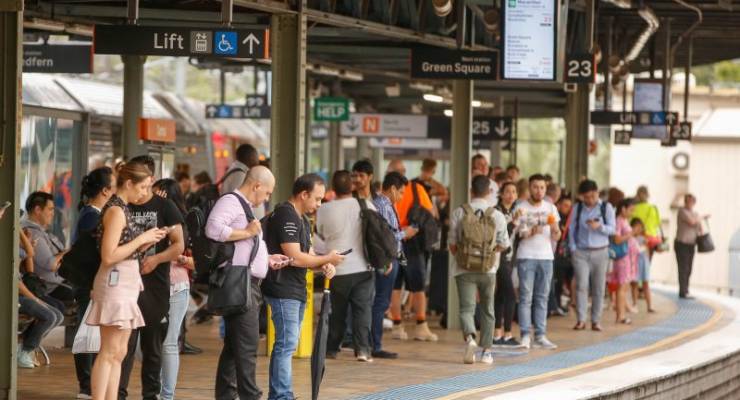
The desperate reporting of African gangs leaves us feeling that the summer of 2018 is the moment where job cuts and social media came together to finally break the news cycle.
In the summer silly season, as institutions slumber, journalists have to feed the news cycle themselves, although there’s always the odd politician ready to help. But this summer, the cycle never really turned over. We had the Sydney trains that didn’t quite strike; an Adelaide that didn’t black-out; and we had the hunt for the mythological African gangs of Melbourne.
Through a mix of under-resourced newsrooms and the competing cycle of social media, none caught the news cycle upswing in the way we would have once expected.
For the last 30 years or so, two major intersecting news cycles in Australia have interacted to send news viral, albeit in a clunky, analogue sort of way.
There’s been the tabloid cycle: usually specific to a city or state, the cycle would launch with morning radio shock jocks powering enough outrage to require an institutional response. This could then be filtered through drive radio and commercial TV news in the evening before floating off into those wild, wild lands of Sky News after dark, re-emerging as a tabloid front page splash the next day (transformed into an outrage about the outrage) feeding back into the shock jocks and tabloid columnists.
The ever-helpful Peter Dutton tried to launch #Africangangs into this cycle with his Ray Hadley interview. Prime Minister Turnbull provided the institutional response, and the Herald Sun got all hot and bothered the next day. But it was hijacked by social media – and by Melburnians getting social and going out to dinner.
Then there’s been the broadsheet cycle: more likely a national story, the cycle would start in The Sydney Morning herald and/or The Age, followed by AM and ABC morning, into a round of parliament house doorstops, through question time, onto the evening news and 7.30, to finally die late on a Monday night debated on Q&A – from where it could jump-start the outrage needed to power a new tabloid cycle.
Briefly, in the later days of Howard and Rudd (mark 1), The Australian’s front page “exclusive” (often a beat up, sure, but not wrong) would lead the ABC radio news and feed into that day’s political frou-frou. Once the ABC stopped picking up The Oz’ splash, the replicant died out.
There were smaller cycles: the Oakes cycle, started through yet another exclusive launched on the Channel Nine news or the ABC auto-cycle, where a Four Corners blockbuster is spread over 24 hours of coverage.
Now, social media sets the cycle and the media has to run to keep up. This summer, journalistically-speaking, that story was #changethedate. None of the traditional cycles quite knew what to make of it, with senior pundits left panting behind, sputtering “but, but, but … ”
It showed the news media don’t even control their own news cycle anymore. Sad!
And Trump shows what happens when politicians grasp the power of this moment.
The death of the traditional news cycle is partly lack of resources, partly lack of cultural perception. Largely, it’s economics. As a simulacrum of competition in a “read the latest” framework, the news cycle drove a high volume of low attention readers — the formula for advertising riches.
Not anymore. Now media organisations that want to succeed need readers who are sufficiently attentive to pay for content. And that’s an audience that’s unlikely to be attracted to the warmed up leftovers of the news cycle of the moment, just by spicing it up with some extra bit of gristle for readers to chew on.
As we move into February, and media staff come back from leave, we’ll see attempts to pump life into the old news cycle. But this summer shows that our readers, listeners, viewers have already moved on. They’re in control.
And come the next round of job cuts and closures — all but inevitable given the vertiginous fall in advertising dollars — the old news cycles will fade away, leaving media to fight to keep its place in the social media ecosystem.








Perhaps, before Crikey gets too self righteous, it should discuss Hinch’s column last week which played the African ball for all it was worth. What is more he said African and didn’t in the least mind demeaning every person from the continent who lives here. Very shabby Crikey.
Hinch is an entertainer who briefly showed promise of being a serious parliamentarian. It would be a pity if he returned to old habits. Perhaps he could think up a new name for his one-man Justice Party if he wants to be back in the lynch mob with the other shock jocks. The Summary Justice Party?
Couldn’t agree more OGO – letting the hypocrite, with his record, use these columns for PR to promote his idea of what’s right is beyond the pointy stick.
As for the Just Us Party showing promise of being a “serious paliamentarian” – I missed that – must have blinked?
Don’t forget the annual Christmas splash that Kevin Donnelly gets on the ABC
Oh mooaann!!!! There he was on The Drum one evening last week. The ABC should have more respect for my blood pressure than to have him on without any warning. Perhaps they could treat him like a filing cabinet with secret papers and get ASIO officers (with their faces pixelled out, of course) to collect him?
It might not be dead, but it’s showing all the signs of being on lifeless support.
Is Limited News anything but professional social media?
Pointed out by another, but Crikey’s finger pointing gets weakened when they pay a tabloid-hack turned accidental Senator to write a column where he picks out single events, cites himself as a source and brags about his ratings to try convince us that the “African gang” problem is real and terrifying.